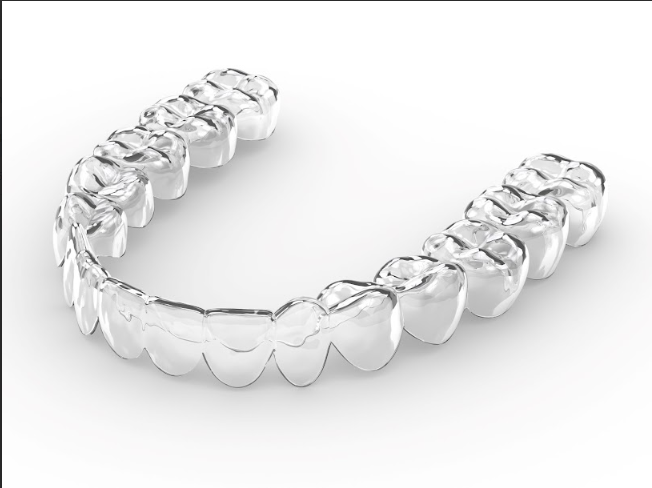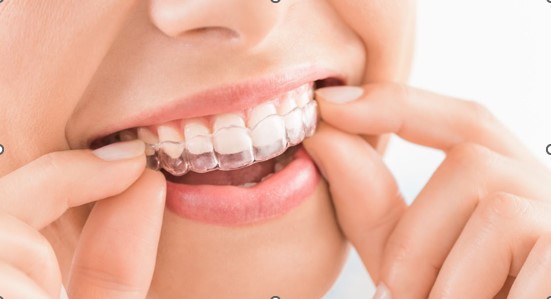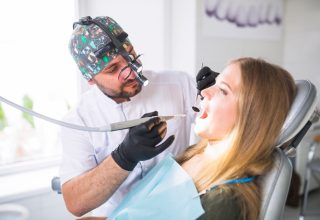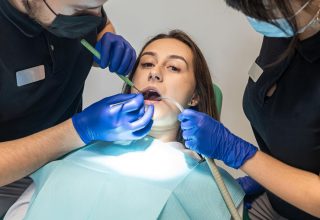Are You A Good Invisalign Candidate? Benefits, Procedure, And Costs
Invisalign is a popular orthodontic treatment that can be used to straighten teeth. It’s becoming increasingly popular due to its convenience, comfort, and invisibility compared to traditional braces. But are you a good candidate for Invisalign?
This article will discuss the benefits, procedures, and costs associated with this form of treatment in order to help you make an informed decision about whether or not it’s right for you.
Contents
What Is Invisalign?
If you’re considering this orthodontic treatment, here’s what you need to know:
- Invisalign uses clear plastic aligners to gradually move the teeth into their desired positions.
- The aligners are custom-made and comfortable, making them virtually invisible when worn, hence the name ‘Invisalign.’
- The benefits include reduced discomfort compared to traditional braces and less frequent dentist visits for adjustments or repairs due to its low maintenance nature.
The procedure typically involves taking impressions of your teeth, which technicians will use to create customized sets of aligners for your mouth.
For further queries, it is best to seek the help of Molson Park Dental or similar dental clinics for proper guidance. Invisalign can offer excellent results with minimal hassle if it suits your needs and budget.
Benefits Of Invisalign Treatment
Invisalign is a revolutionary treatment for straightening teeth without using traditional metal braces. Below are the following benefits:
Straightening Teeth Discreetly

Straightening teeth discreetly is an attractive option for many people, and Invisalign provides a great solution. It uses custom-made aligners of smooth, comfortable plastic worn over the teeth to shift them into position gradually. These can be removed when eating or brushing your teeth, making them easier than traditional braces and less visible.
The procedure typically takes around 18 months, depending on individual cases, but usually offers faster results compared to other orthodontic treatments. Additionally, unlike metal braces, there’s no need for office visits with bands or wires being adjusted.
Removable Aligners For Better Oral Hygiene
Using removable aligners for better oral hygiene is a beneficial option that can offer improved confidence and convenience. By utilizing this treatment, you can remove your braces when necessary, during eating or brushing, so there’s no disruption in your daily routine. The procedure involves taking impressions of your teeth and creating custom-made aligners that must be worn for 20-22 hours daily.
No Dietary Restrictions
Unlike traditional metal braces, one of the biggest advantages of Invisalign is that there are no dietary restrictions. You can eat everything from hard candy and popcorn kernels to sticky caramels and chewy licorice without worrying about damaging your brackets or wires. This also makes brushing and flossing easier since food isn’t stuck in awkward places.
Reduced Dental Visits
In addition to not having any dietary restrictions, another great benefit of Invisalign is that you don’t have to visit the dentist for checkups constantly. With traditional braces, a patient would typically return every few weeks to adjust and tighten the wires.
This is optional with Invisalign because it uses customized aligners created specifically for everyone’s mouth. It allows them to change their trays at home without professional assistance. This cuts down the number of appointments to schedule.
Assessing Dental Issues Invisalign Can Treat
To assess whether Invisalign is a good treatment option, it’s important to consider the dental issues it can treat. Common conditions addressed with this system are overcrowded teeth, gaps between your teeth, overbites, underbites, and cross-bites.
It is also useful in treating more severe cases of malocclusion or misalignment of the jaws. Your dentist can advise you on which type of alignment issue Invisalign can best address based on their diagnosis. Depending on the case’s complexity, they may recommend traditional braces or Invisalign.
The Invisalign Treatment Process
Are you ready to take the first step toward straightening your teeth? With Invisalign, getting the perfect set of pearly whites is easier than ever. Read on to learn the process.
Initial Consultation And Assessment
After understanding the basics of Invisalign treatment, you may wonder what to expect from your initial consultation and assessment. The process starts with a physical examination by an orthodontist. This will involve taking x-rays and impressions of both upper and lower teeth to form custom aligners that fit perfectly around each tooth.
During this appointment, you’ll also receive details about how long your treatment plan is expected to last and guidelines on proper care for the aligners. Your orthodontist can answer any questions or concerns regarding Invisalign, so it’s important to come prepared with all of them beforehand. After examining your mouth, they can determine if you’re a good candidate for Invisalign and provide additional information on cost and insurance coverage options.
Digital Scanning Or Traditional Impressions
The process starts with digital scanning or traditional impressions of your teeth when determining if you’re a good candidate for Invisalign. Digital scans are faster and more accurate than traditional impressions. They only take minutes and involve no mess.
This cutting-edge technology allows dentists to plan each treatment step before committing to any real action. With traditional impressions, dental putty is used to make molds of your mouth that can be analyzed. Both processes provide orthodontists with an understanding of your smile to create a customized treatment plan tailored specifically for you.
Customized Treatment Plan
Once it has been determined that you are a good candidate for Invisalign, your dentist will create a customized treatment plan tailored to your individual needs. This process begins with an in-depth consultation where the dentist evaluates your teeth, mouth, and gums.
During this appointment, the dentist will determine if Invisalign is suitable for you and how long the estimated treatment time may be:
- The first step is to take impressions of your teeth which will be used to create three-dimensional (3D) images of your mouth.
- These images allow the dentist to analyze potential issues, such as overcrowding or spacing problems between each tooth.
- Additionally, they can identify areas with too much or too little jawbone density.
- Then, these 3D images are sent off to have aligners created specifically tailored to your unique dental needs.
- Each set of aligners must fit precisely on each other to ensure gradual but steady movement of the teeth into their desired positions over time.
- Your dentist may also prescribe additional sets of aligners at specific intervals throughout treatment so that progress can continue without interruption until completion.
Once all steps have been completed, you’ll receive instructions from your doctor about the proper use and maintenance of the aligners during treatment, including when you should change them out for new ones prescribed by the clinic.
Completing The Treatment
Once the treatment is complete, the dentist or orthodontist will check the patient’s teeth to ensure they have been moved into their desired positions. They may then fit a retainer, either an invisible one made of plastic or metal wire, which helps keep the teeth in place while allowing them some flexibility.
The aligners can also be used as retainers after the treatment has finished. However, patients must use whichever method their dental care provider suggests to maintain their results and avoid relapse. Patients should expect regular follow-up visits with their dentist or orthodontist to ensure everything is going well.
Factors Influencing The Cost
Cost is an important factor to consider when evaluating the suitability of Invisalign for a particular individual. Several elements influence the cost, ranging from the complexity and duration of treatment to geographical location and insurance coverage.
Below are key factors that can impact the total cost of Invisalign:
- The severity of your malocclusion (bite misalignment): More complex cases tend to be more expensive.
- Duration of treatment: Most aligners must be worn for at least 12 months to achieve desired results. However, some may require up to 24 months or longer.
- Your location: The costs vary by region due to local market forces such as overhead expenses, labor costs, and competition levels.
- Insurance coverage: Depending on your provider’s policy, you may receive partial reimbursement for orthodontic treatments like Invisalign.
- Additional services: Services, like retainers, may be required during treatment. This will add to the overall cost of care.
Ultimately, it’s best to discuss potential fees with your dentist so that you have realistic expectations before beginning treatment.
Conclusion
Invisalign is an excellent choice for many people looking to straighten their teeth discreetly. It offers a range of advantages over traditional braces, including enhanced comfort and convenience. The cost of the treatment can vary based on the complexity of your particular dental case, where you live, and who performs the procedure.
Read Also:
- Best Practices For Healthy Teeth
- Signs To Know That Your Teeth Have Cavities
- More Than Teeth: How Dentists Handle Your Dental Information



